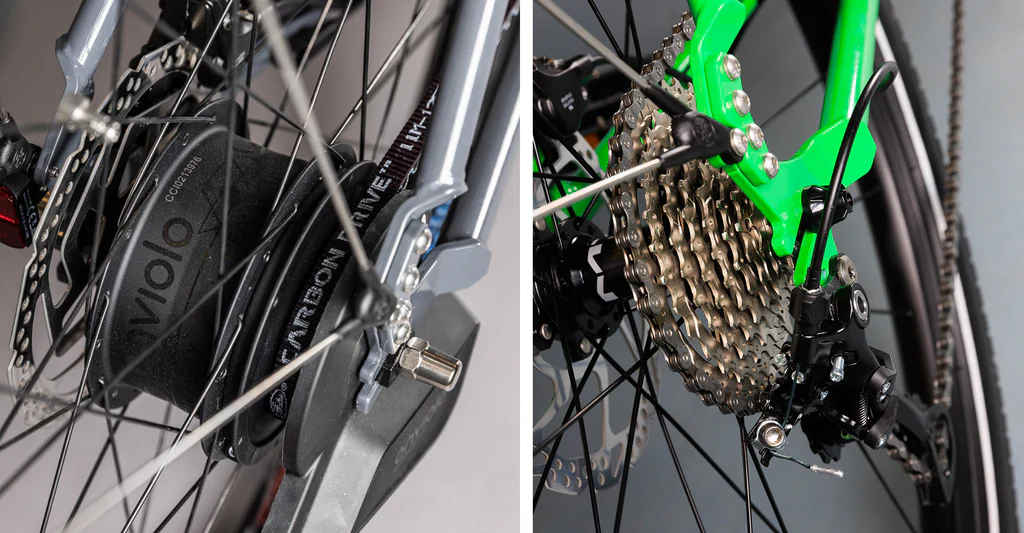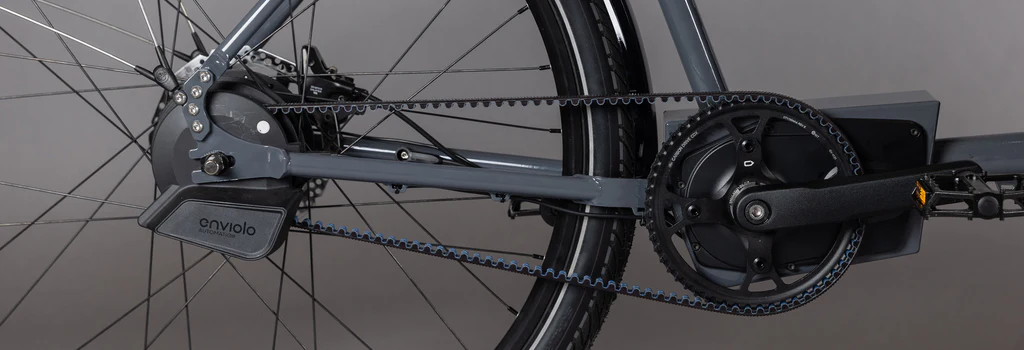
External vs internal gears
Competition bikes have external gears, and heavier commuter bikes generally have internal gears. That highlights the differences quite clearly. There are 3 keys aspects that differentiate the two, they are:
Internal gear hubs are heavier.
The extra weight is not noticeable on cargo bikes, but a big deal on sportif bikes.
Internal hubs often have more friction inside the gearing system and thus create pedalling resistance.
External gears shift while pedalling, internal hubs often don’t shift under loads.
What this means is that if you need to stop at a traffic light, you need to shift down while pedalling as you are slowing down to be in a gear you desire when you take off again. With internal gearing, you can stop first and then select the correct gear for acceleration. On the other hand, some internal geared hubs do not shift gears when you are pedalling. So when you go up a hill and want to change the gear, you need to momentarily stop pedalling, which may kill your speed.
As a sidenote here, Hagen bikes come with Enviolo Automatiq gearing and always shift – being pedalling or standing still. This leaves the only cons for the Enviolo the weight and resistance limitations.

Belt vs chain
Firstly – only internally geared hubs can take a belt drive.
If you’re riding in mostly dry conditions, the chain will be a fine option, but the differences become clear in the wet season. If you’re living in an area with some frost, there will be salt on the roads for defrosting. With the combination of water and salt, chains start rusting very fast, causing creaking noises and premature wear of cogs. And it’s not just rust, it also stretches as it ages.
Neither of those happen to belt drive, you don’t need to readjust the rear wheel position as the belt does not stretch, nor does it rust or need any oiling or maintenance. The only real downside of a belt is that if it’s set up wrong with too little tension, it can come off and will break while doing so. Think of it as a piece of cloth, it’s very strong until you have a small tear.

Choose:
External chain drive – if you value shifting performance under loads like climbing uphill or riding with headwind, and you do not want extra drag from the hub. Also recommended option if you live in an area with very little rainfall or only use the bike during summer. Often the best option for non-electric bikes.
Internal chain drive – if you want to be largely maintenance free, but you are okay changing a chain regularly, which is likely to be after every 1000-2000 km depending on the conditions you ride in. In dry weather, the chains last longer.
Internal belt drive – if you want to be as maintenance free, quiet and clean as possible. Highly recommended for winter commuters, especially e-bike owners.